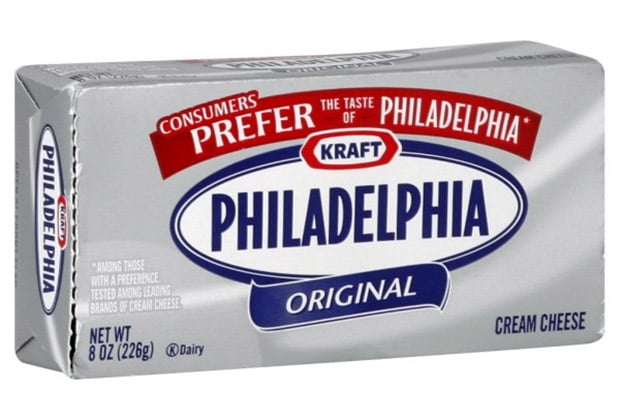Philadelphia Cream Cheese was founded in 1872 and is now owned by Kraft Heinz. It is one of the world’s best-selling cream cheese brands. But did you know where the brand of cream cheese was first made?
Philadelphia Cream Cheese was actually invented in New York and has never been produced in the city of Philadelphia. Its name was part of a clever marketing strategy because Philadelphia was known for its high-quality dairy back in the 1880s.
The Origins of Philadephia Cream Cheese
Cream cheese is made from whole or skimmed cow’s milk. It’s soft, smooth, creamy, white, a little salty, a little sweet, rich, and spreadable. It was first made in Europe in the Normandy village of Neufchatel-en-Bray. It was naturally dubbed French Neufchatel. It had a different texture than the one I described: it was semi-soft rather than soft and grainy.
Though it was first documented in 1543, the product dates back to 1035 and is considered one of France’s oldest cheeses. The flavor is similar to Camembert when eaten fresh or after eight to ten weeks of maturation: nutty, salty, and mushroomy.
It received Appellation Origin Controlee (AOC) or a controlled designation of origin status in 1969. This is a French certification confirming that the cream cheese was actually made in France’s Neufchatel region. It comes in various shapes and sizes, including cylindrical, square, boxed, and heart-shaped. It could be manufactured commercially, on a farm, or by an artisan. The artisan version is typically wrapped in a white rind.
In 1583, the first mention of cream cheese in the United Kingdom was made in England. The version we are familiar with within the United States was created in the late 19th century. The United States Department of Agriculture mandated that American commercial cream cheese contain at least 33% milkfat and 55% moisture, with a pH balance of 4.4 to 4.9, and cow milk. You can, however, make your artisan cream cheese with yak, goat, sheep, buffalo, llama, or whatever animal milk you prefer, other ingredients, and the manufacturing process you choose.
Before fermentation, lactic acid is added to pasteurized and homogenized milk to give the cheese a spreadable texture. Stabilizers like guar, carob, or carrageenan gum are added to avoid separation or crumbling, which is frequent with this sort of food. (Source: Delishably)
The Philadelphia Cream Cheese Brand
In 1872, dairyman William Lawrence was the first to mass-produce cream cheese. He then opened his business in Chester, New York. He started by manufacturing Neufchâtel cheese, similar to the cream cheese we are familiar with today.
After three years, Lawrence chose to add cream to his Neufchâtel recipe to make it more prosperous and more delicate. He then came up with the term cream cheese and created his brand, Neufchâtel & Cream Cheese.
In 1879, he partnered with another Chester merchant, Samuel S. Durland, to create a larger facility. In 1880, Alvah Reynolds, a New York cheese distributor, began selling the cheese under the name Philadelphia Cream Cheese. (Source: Delishably)
